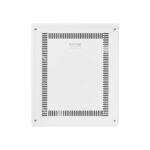Modular building solutions have become a game-changer in a world where flexibility and efficiency have become the key considerations. The days of spacing construction schedules and strict designs are over. The existing modular buildings are providing a new concept that can easily adjust itself to the different requirements, be it the residential units, business firms or schools.
Think of how you can turn your vision into a reality within the record time and use structures that perfectly fit in a setting that is theirs. Modular buildings do not only offer speed but also astonishing versatility, as they offer a tailored solution to meet the requirements. You will be able to find out how these flexible structures will transform your next project as we explore this exciting world of construction further. So, what are the various alternatives that you have and how do they suit you perfectly!
Types of Modular Buildings
Modular buildings are in different types with the different types being designed to meet particular needs and applications. Modular office spaces is one of the common ones. They are tailored to businesses in need of growing fast without the construction time-frames.
Modular solutions also apply in the education institutions. The construction of the classes can be done quickly to fit the expanding student population and its learning facilities made comfortable.
Healthcare modules have also been popular. They are used in hospitals and clinics in temporary structures or extra patient care units during peak periods.
Residential units form another interesting category. Prefabricated houses provide a cheaper option, yet of quality standards.
Flexible design is also changing retail space. The speed of assembling enables the businesses to establish a shop in new areas fast in a dynamic way in response to the market needs. All the kinds of modular buildings have their own distinct benefits that may be used in various sectors of application.
The Process of Constructing a Modular Building
The building of a modular building commences with proper planning. There is the collaboration of architects and engineers to design blueprints that suit a given need. This is an important stage and it lays the foundation of all that comes up.
Designs are completed and then manufactured off-site and under controlled environments. Modular parts are constructed at the same time and this is very fast as opposed to the conventional method of construction. Quality checks are done extensively in each module before leaving the factory.
The next thing is the transportation of such modules to the construction site. Cranes move them into place on existing pre-prepared foundations and precision align them.
Creativity and functionality meet in the final assembly. Teams liaise utilities and complete interiors as per specifications of the clients. This lean methodology ensures that projects can sometimes take a matter of weeks and not months or years to be realized and that it also saves time and money without having to sacrifice on quality or design flexibility.
Design and Customization Options
In the case of modular buildings, design and customization are some of the characteristics that distinguish them. Clients are in a position to modify their structures down to the earth. With this flexibility, a variety of styles and functionality is possible.
Everything can be changed to suit a particular requirement, whether it is through the layout adjustment to the exterior finishes. Want an open-plan office? Or maybe separate consultation rooms? The choice is yours.
Even such architectural features as windows, doors and building materials can be customized. Individuality is also increased through color palettes and interior designs.
The alternatives of sustainability are also gaining popularity, and green materials could be found at your service. Aesthetics and functionality are added to green roofs or energy-efficient systems.
The modular construction is beautiful because it is adaptable. All the projects are distinctively branded with useful applications in a seamless way.
Advancements in Technology for Modular Construction
Modular construction has a promising future in the landscape, which is changing very fast due to the development of technologies. Building Information Modeling (BIM) is essential in this change. It enables the architect and builders to have a detailed 3D representation of the building in 3D before the construction process commences.
Off-site prefabrication is another major innovation. Part manufacturing occurs in a carefully controlled environment, and minimizes the delays because of weather or on-site problems. This improves efficiency and quality control is increased.
Automation also is shaking the modular construction. Robotics facilitate work such as cutting materials or attaching components that human beings can have difficulties in doing accurately every time.
Moreover, design processes are now being incorporated with technology such that smart energy efficient solutions are being introduced in the blue print stages itself with sustainable practices.
Now with these advancements, modular buildings offer faster speeds of construction as well as being part of an increasing demand in eco-friendly buildings, not at the sacrifice of style or functionality.
Industries That Can Benefit from Modular Buildings
The modular buildings are versatile in any industry. They are used in healthcare to offer fast solutions to clinics and medical offices, so that the treatment provided to patients can grow at an alarming rate.
Modular structures are also helpful in education systems. Entire school buildings or temporary classrooms may be established within record time in response to the increased number of students.
The retail businesses are also adopting modular designs. Pop up stores and seasonal stores enable the brands to experiment on new markets without long-term commitments.
Modular components applied in the construction of site offices and accommodation of workers make construction companies more efficient at work locations and reduce costs.
The hospitality industry is not left behind since there is a creation of modular hotels, which are assembled in a short time and provide the traveller with a different experience without compromising quality and comfort.
This novel way of doing things is transforming the manner in which space issues are being addressed in most industries.
Considering Modular Buildings for Your Next Project: Things to Keep in Mind
These are some of the essential consideration when coming to modular buildings in your next project. To begin with, analyze your needs and objectives. How much space do you require? What purposes will the building have? The knowledge of these factors will lead you to the appropriate design and configuration.
Next, think about location. The accessibility of the site may have an impact on the construction process and final prices. Make sure that the local laws permits modular structures in your locality. Certain areas might be restricted or limited and this might impact on your plans.
Another important factor is budget. Modular buildings are usually cost-effective because of the effective construction techniques, but it must be tallyed that any extra cost on the land development or the installation of utility must be kept in mind.
The options of customization may differ greatly depending on the manufacturer. Discuss different designs, materials and finishes that meet your brand requirements or functional needs. Working hand in hand with a good builder is the way to go so that you can have the product exactly as you can imagine.
Think topographically when creating a modular building project. Scalability is provided by many solutions- it can be easily expanded or modified as the requirements vary.
With these points of consideration in the decision-making process, you will be in a better position to accept everything that the modular buildings have to offer as well as make sure that they serve both the short-term and long-term demands.
















